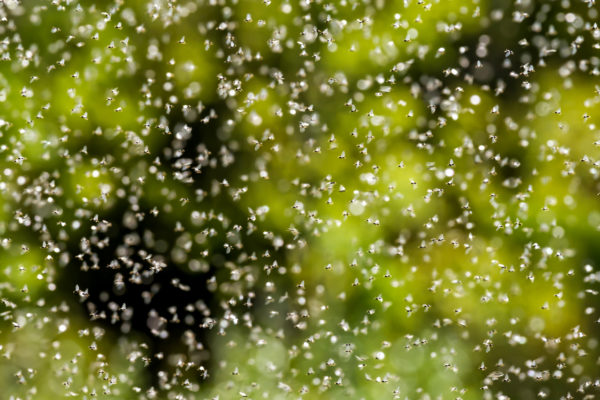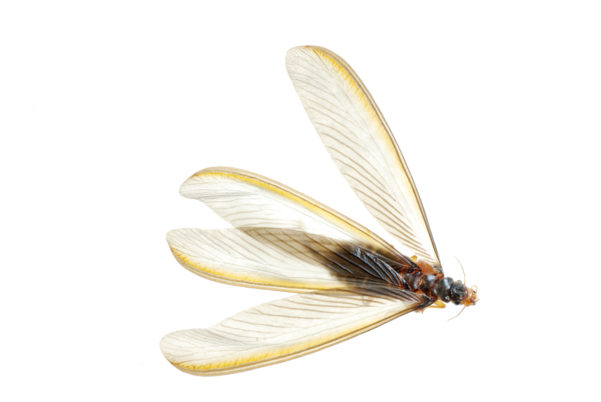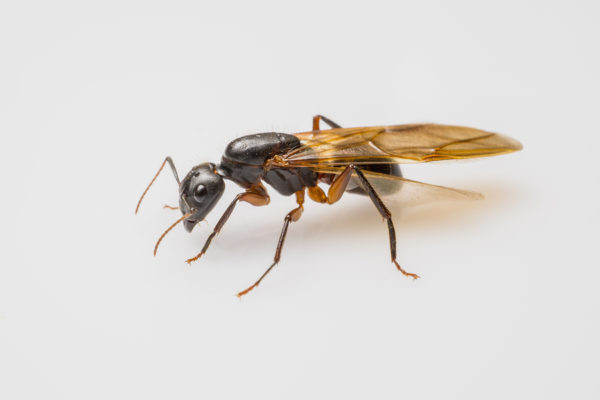READY TO GET STARTED?
REQUEST A FREE ESTIMATE
Fill out the form below or call (888) 466-7849 for a free, no-obligation estimate.

Termites can wreak havoc on your home, causing substantial and costly damage. These household pests are stealthy, often going undetected for long periods of time. Preventing termite damage is critical, and now is the time to get started.
Termites begin swarming in the South in early spring. So, if you don’t already have a termite control plan, now is the time to consider acquiring one. While swarming termites may not cause structural damage, they are an indication that a termite colony is active nearby. This might result in catastrophic structural damage to your property, resulting in repair expenses in the hundreds of thousands of dollars. Although spring and summer are peak swarming season, termites can be active year-round, especially in warmer climates like ours.
There are various techniques of termite management, and determining which one is best for your property can be difficult. After all, we’re talking about safeguarding one of your most valuable investments! Because termite damage isn’t usually covered by homeowners insurance, it’s imperative to not only get your property treated, but also to have a solid termite guarantee.
If you understand how termites work, you could try your hand at DIY termite control. There are a variety of options available for this, ranging from simple liquid barrier treatments to termite baiting systems. If you have any slabs linked to your home or a basement, this can be a difficult task. To keep termites out, a liquid barrier must be comprehensive with no gaps.
If you have active termites or damage, several pest control firms will offer a liquid treatment. This offers both immediate and long-term termite protection. Make sure your termite treatment comes with a decent warranty, especially one that covers termite re-treatments and any damage caused after treatment.
This method of termite treatment is great if your home is still under construction. The wood structure is coated with borates, which are soil elements that provide long-term termite protection while also repelling common domestic pests.
Baiting systems have been shown to be efficient at eliminating entire termite colonies underground around your home, are less invasive than liquid treatments, are suitable for both new and existing structures, and typically come with a lifetime warranty. It is also the most environmentally friendly solution to defend your home from termites, as it eliminates the need for hundreds of gallons of chemicals. Monitoring devices are placed strategically around your property’s perimeter. The stations have a bait tube that termites are drawn to.
If you have a problem with termites or any other household pests, contact your local pest control company for an evaluation.
Common Rats and Mice You Might See this Spring
Do Water Moccasins Swim on Top of Water?

The change of season from winter to spring brings warm weather, sunshine, and … bugs! This is the time of year when many pests emerge from overwintering and begin the mating process. Spring is also known as swarm season – because this is the time when termites and flying ants emerge in droves, sometimes in swarms of thousands! While flying ants can cause problems in and around your home, termites are much more common – and much more costly! How can you tell if those swarming insects are terrible termites or flying ants? Check out our handy reference below for the key differences between the two, as well as what to do if you have these pests swarming in or near your home.

Termites usually swarm once a year for reproduction and expansion of their colonies. Swarms mark the official beginning of termite season. Subterranean termites swarm in spring and during the daytime. Drywood termites swarm in late summer and early fall. Dampwood termites swarm in the summer.
Termites swarm after their colony reaches a certain size and the weather conditions are optimal. The termites are attracted to light and are often found near windows and light fixtures. Swarming termites will try to squeeze through racks and crevices in your walls and foundations to try and reach open air. If you see swarming termites then there is a good chance there is a well-established termite colony in or near your home.

Flying ants will swarm in late spring and early summer. They have to have bright sunlight, low winds, high humidity, and warm temperatures to swarm. They prefer to swarm after there has been 3 to 5 days of rain.
Flying ants swarm for the same reasons as termites – to reproduce and expand their colonies. Flying ants don’t represent any greater threat to humans than their wingless counterparts. Flying ants aren’t as significant a threat to your home as termites but they can still cause damage. If you have flying ant swarms in your home there is a good chance you have an established ant colony in your walls.
So now that you can identify exactly what kind of pest is swarming around your home, what should you do next?
As temperatures continue to increase across the country and the ground becomes warmer, winged termites will emerge in search of a suitable spot to create a new colony, often in residential settings. We want to take this opportunity to educate homeowners about the threat of termites and the possible signs of an infestation this spring.
Termites feed 24 hours a day, seven days a week on the cellulose found in wood and paper products. They are known as “silent destroyers” due to their ability to compromise the structure of a home without being noticed until it’s too late.
Termites are very destructive and the damage inflicted can be quite costly if left untreated. Each year, termites cause more than $5 billion in property damage, so it’s important for homeowners to be on the lookout for signs of these wood-destroying pests in and around their property.
Here are a few clues that termites may be present in a home:
For more information on termites, please visit https://www.callnorthwest.com/termite-control/.
With Spring upon us, the temperature will start to get warmer, finally! This is great news for us, but it also means that insects are beginning to come out of hibernation. Two insects of great concern, particularly in the spring, are the ant and the termite.
Both of these insects, flying ants and termites, will begin to swarm soon, so it is important to know the differences between them so you can help out your Pest Management Professional. Should you catch one, there are three noticeable differences between a flying ant and a termite.
If you see swarmers and are worried, call your local Northwest Exterminating Service Center. They will be happy to help you with all of your pest control needs, and can target problem insects as needed.
Katherine King
[email protected]
Termites are some of the hardest working pests in the business. 24/7 they are in search of food which is oftentimes the wood from our homes. Termites are responsible for an estimated amount of over 2 billion dollars worth of damage to home in the US each year.
One of the first signs of a termite infestation is spotting termite swarmers. Swarmers are winged termites that are often mistaken for flying ants. Swarming (flying) termites have only 2 body segments, straight antennae, and 2 sets of wings equal in length. Flying ants, on the other hand, have 3 body segments, bent antennae, and 2 sets of wings that differ in length. Mud tunnels or tubes along the foundation are also signs that termites have found their way to your home.
The best action against termites is to be proactive.